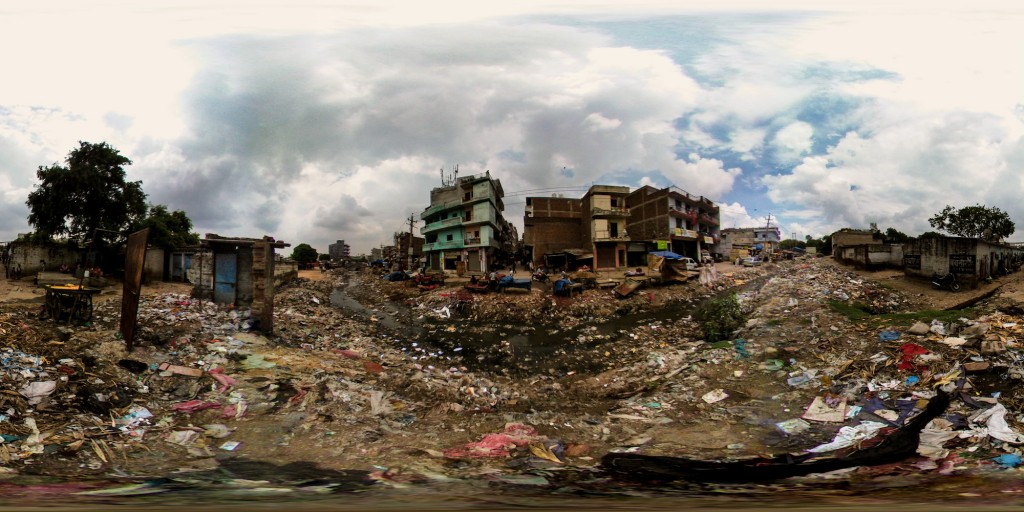22 Sep Lockstitch Lives
Posted at 23:42h
in
Lockstitch Lives
by rajan
Reading Time: 4 Minutes Lockstitch Lives Website
Lockstitch Lives brings the challenges associated with exclusionary urbanization to life. Explore the neighbourhoods of Dundahera, Kapashera, Sikanderpur Pahadi and Kartarpuri. Venture into the homes where migrants live and listen to their stories as they describe the challenges they face in accessing clean water and sanitation facilities, navigating relationships with landlords and keeping themselves safe from violence at home and at work. These experiences are deeply personal, unique to the Delhi, NCR —and are also reflective of the living and working conditions faced by migrant workers in megacities across the globe.
Press Kit
In High-Tension Gali, a lower middle class residential lane in urban Kapashera in Haryana, India, workers live in the precarious shadow of a high voltage electric transmission tower carrying uninterrupted power to export-oriented factories. The tower spans a narrow lane lined with two-story buildings. Cars, bicycles, auto-rickshaws and pedestrians thread beneath the humming tower. Fires sparked by the wires are a regular threat to the residents of this dense urban space. Off the grid which is powered by these lines, workers access electricity through shared generators and a maze of wires that siphon power from a streetlamp. The power lines in High-Tension Gali provide a snapshot of precarious citizenship in the Delhi, National Capital Region (NCR) and the counter-struggle for the right to urban citizenship by rural-urban labour migrants in this rapidly expanding megacity.
From October 17-20, the UN Habitat III global summit on housing and sustainable urban development will convene in Quito, Ecuador to formulate the New Urban Agenda. This global strategy around urbanization, like the UN Sustainable Development Goals, has the potential to inform programmatic and funding priorities for years to come.
At best, the New Urban Agenda will reflect the needs of some of the most precarious urban residents—migrant workers and their families who inhabit the urban industrial peripheries of rapidly expanding megacities. In India and elsewhere, migrant workers traveling in search of employment are from some of the poorest, most marginalized social groups in the country. Many describe the migration process of traveling long distances from rural to urban areas as akin to moving to a foreign land. Without family and kinship support, they internalize their undocumented and invisible status as having no voice and no rights.
Delhi, NCR—the most populated city in India—is a spectacular manifestation of imbalanced economic growth, fueling rural-urban migration and the attendant concentration of migrant labour within this urban industrial hub. As Delhi-NCR expands across distinct village, municipal and state jurisdictions, exclusion of migrant communities from urban planning strip Indian migrant citizens of their citizenship rights within their native countries. As a result, while national citizenship may be at once universally inclusive in membership, it is all too often unequal in distribution.
In the lead up to the Habitat III global summit, the Society for Labour and Development and HELM Social Design Studio invite you into a conversation with migrant workers employed in the garment and domestic work sector in Gurgaon—a bustling industrial hub within the Delhi, NCR. Lockstitch Lives – Migrants in the Megacity, a 360-degree interactive documentary, transports the user to the neighbourhoods of Gurgaon. Using 360-degree multimedia, Virtual Reality, photography and video, Lockstitch Lives provides deep insight into the living and working conditions of these marginalized communities, and aims to deliver their voice and struggle palpably and honestly.

A stream of garbage runs through a workers housing colony in Kapashera
Lockstitch Lives Website



Sorry, the comment form is closed at this time.